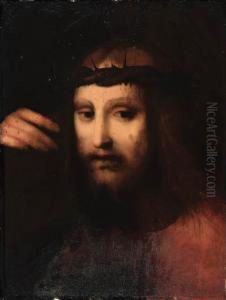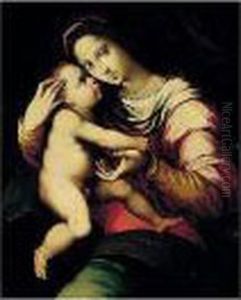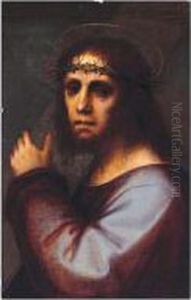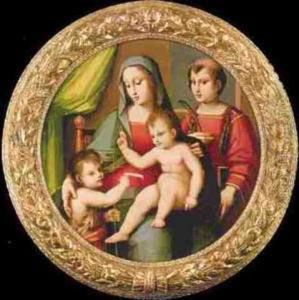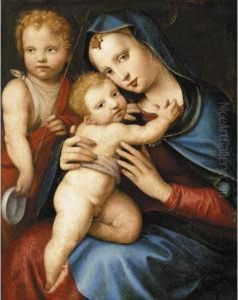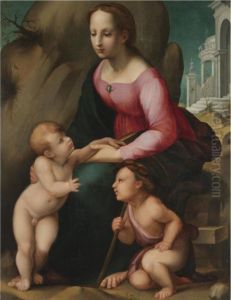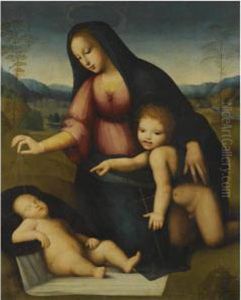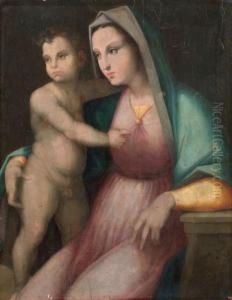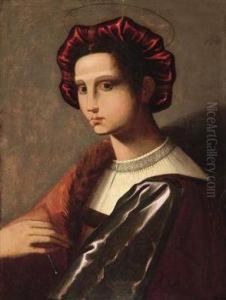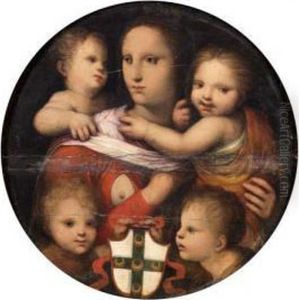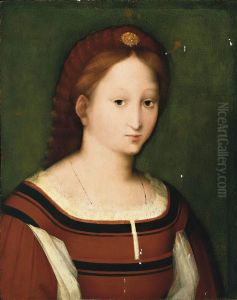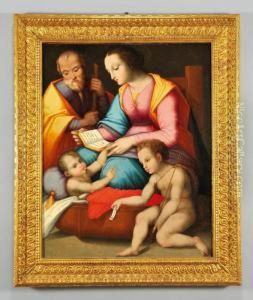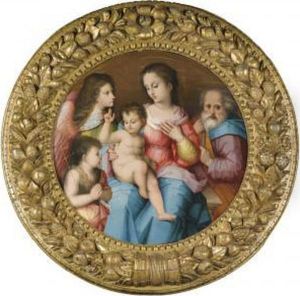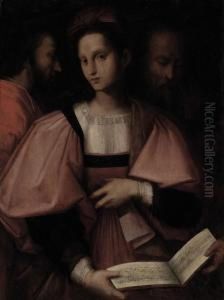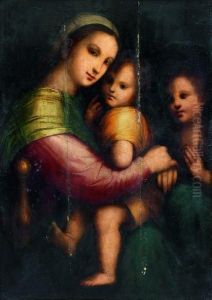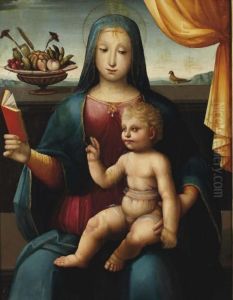Andrea Piccinelli Il Brescianino Paintings
Andrea Piccinelli, known more commonly as Il Brescianino, was an Italian painter of the Renaissance period, born in 1487 in Brescia, a city in the Lombardy region of northern Italy. His moniker, 'Il Brescianino', reflects his origins from Brescia, distinguishing him in the vast landscape of Italian Renaissance artists. Despite the relatively brief span of his life, ending in 1525, his contributions to the art world during this transformative era were significant.
Il Brescianino's work is characterized by its delicate execution, vibrant colors, and the serene, harmonious qualities typical of the High Renaissance style. He was influenced by the works of Raphael and Leonardo da Vinci, as well as by the Venetian school, which is evident in his use of color and light. However, comprehensive details about his training and the early phase of his career remain scarce, leaving art historians to piece together his development through the examination of his surviving artworks.
His oeuvre primarily consists of religious subjects, a common theme for artists of his time, reflecting the deep spiritual and cultural currents of the Renaissance. Among his notable works are several frescoes and altarpieces in and around Brescia and Siena. His style evolved from the rigid and formal compositions of the early Renaissance towards the more fluid and dynamic approaches of the High Renaissance.
Despite his talent and contributions to the Italian Renaissance, Il Brescianino remains a somewhat obscure figure in art history. The scarcity of documented records about his life and work has contributed to this relative anonymity. Moreover, his death in 1525, in the prime of his life, cut short a promising career that might have led to greater recognition and influence in the evolving narrative of Renaissance art.
In recent years, there has been a renewed interest in Il Brescianino's work, with art historians and scholars endeavoring to shed more light on his life and oeuvre. Through these efforts, Il Brescianino is gradually being repositioned within the broader context of Renaissance art, highlighting his contributions and the unique qualities of his work. Despite the challenges in fully uncovering his story, Il Brescianino remains a fascinating figure, representing the depth and diversity of talent during one of the most celebrated periods in art history.
